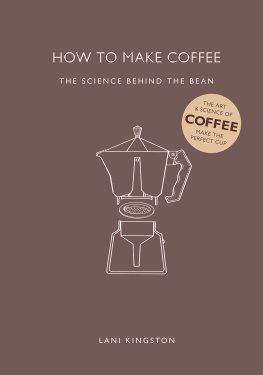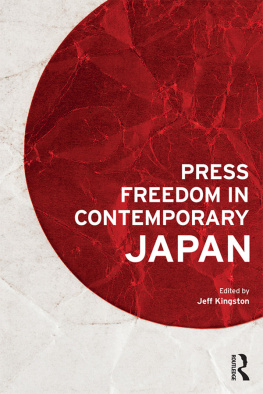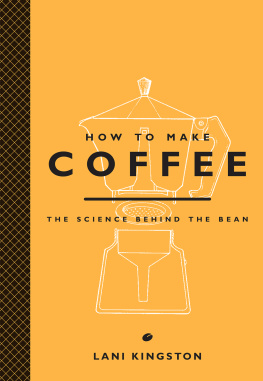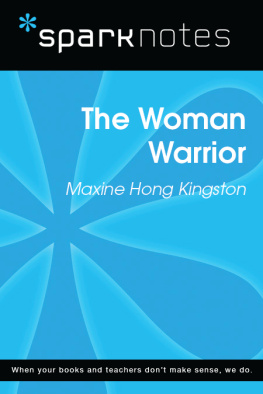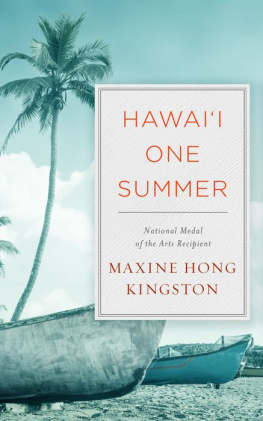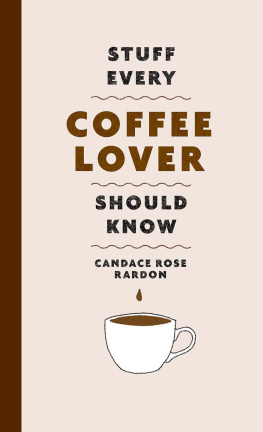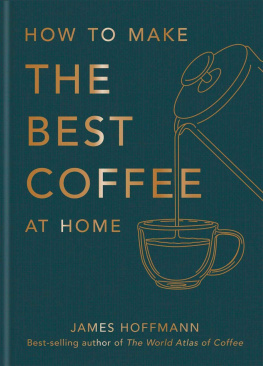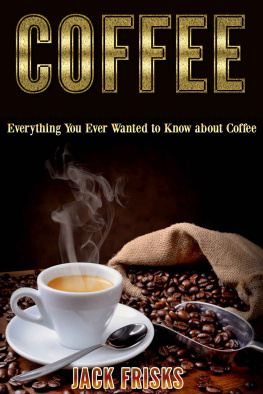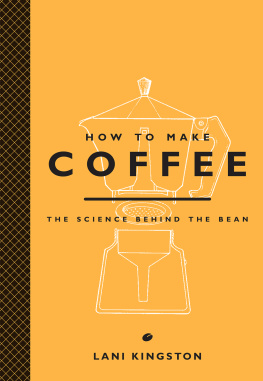HOW TO MAKE COFFEE
THE SCIENCE BEHIND THE BEAN
LANI KINGSTON

First published in the UK in 2015 by
Ivy Press
210 High Street
Lewes
East Sussex BN7 2NS
United Kingdom
www.ivypress.co.uk
Copyright 2015 Ivy Press Limited
All rights reserved. No part of this book may be reproduced or transmitted in any form or by any means, electronic or mechanical, including photocopying, recording, or by any information storage-and-retrieval system, without written permission from the copyright holder.
British Library Cataloguing-in-Publication Data A catalogue record for this book is available from the British Library
Print ISBN: 978-1-78240-201-5
EPUB ISBN: 978-1-78240-211-4
MOBI ISBN: 978-1-78240-212-1
PDF ISBN: 978-1-78240-262-6
This book was conceived, designed and
produced by
Ivy Press
Creative Director: Peter Bridgewater
Publisher: Susan Kelly
Editorial Director: Tom Kitch
Art Director: James Lawrence
Commissioning Editor: Sophie Collins
Editor: Jo Richardson
Design & Graphics: Ginny Zeal
Illustrator: Sandra Pond
Colour origination by Ivy Press Reprographics
Distributed worldwide (except North America) by Thames & Hudson Ltd, 181A High Holborn, London WC1V 7QX, United Kingdom
While the publishers and the author have made every effort to ensure that the information contained in this book is accurate and presented in good faith, no warranty is provided nor results guaranteed. The publishers and author exclude liability to the fullest extent of the law for any consequences resulting from reliance upon the information.
Caffeine is the most widely consumed mind-altering molecule in the world: we cannot get enough of it, and drinking good coffee is our delivery system. But what is it that gives coffee such a hold? Its all in the chemistry the molecular structure of caffeine and the flavour-making phenols and fats that can be lured out from the bean by roasting, grinding and brewing. How to Make Coffee lays out the scientific principles for the coffee-loving non-scientist; stick to these and you will never drink an ordinary joe again.
Learn to use the scientific principles that lie behind every great cup of coffee
Shows you which is the best bean to get your preferred result
Assesses every coffee-making method for its pros and its disadvantages
CONTENTS
INTRODUCTION
H ow to Make Coffee is not a recipe book, a bean anthology or a lifestyle accessory; it is an explanation of the scientific principles behind the art of coffee making, with clear step-by-step instructions explaining how all the major coffee-making methods work, and which beans, roast and grind are best for them.
Coffee percolated through to Europe around the time of the Renaissance. It came from Africa, where, according to one very appealing legend, it was discovered by goats or at least by an observant goatherd who saw the effect a certain plant had on his livestock. It seems a very apposite product for its time: brought about by a blend of art, science, discovery and human curiosity, just the kind of refreshment needed by the Renaissance brain on full alert to process the breakthroughs, inventions, creativity and paradigm shifts of the era. Or maybe, given the effects of caffeine on the brain, it was one of the causes of the Renaissance...
Unlikely, but certainly it is the chemistry of coffee that makes it so compatible with the human body and brain, making it the worlds favourite drink. The molecular structure of caffeine, the active ingredient, is very similar to a compound in the human body that controls part of the nervous system. This compound, adenosine, turns down nerve activity, while caffeine blocks adenosine from connecting with its receptors and as such can effectively re-energize.
Coffee is the result of trying to turn caffeine into something the human body can safely use. Growing, harvesting, processing, roasting, grinding, blending, mixing with water, applying heat, extracting, brewing, creating machinery to refine the processes: these are all science-driven applications. Understanding the science of coffee its botany, geography, chemistry, physics, engineering as well as the art blending and balancing helps to create the perfect cup of coffee. If you understand, for example, why water has to be a certain temperature, how the size of the coffee particles can affect extraction, what the ideal proportion of coffee solids to water is, the different rates at which compounds are soluble and how long brewing continues in the cup, you have grasped the principles behind coffee making, by whatever method, and you and your guest need never suffer a bitter cup of gritty, overboiled coffee or weak watery slop again.
SECTION ONE
The Bean

THE BEAN BELT
C offee is one of the worlds most valuable traded natural commodities, second only to oil, and it is produced and consumed worldwide. The prized bean is believed to have originally evolved in the wild in East Africa, but global exploration introduced it to many different cultures. Today, coffee is cultivated in more than seventy countries in an area known as the bean belt.
THE BEGINNINGS OF COFFEE CULTURE
Although the precise origins of the consumption of coffee remain uncertain, it was likely first discovered in Ethiopia. It is thought that at some point before 1000 CE Ethiopian tribes began to grind the coffee fruits containing the coffee seeds or beans and mix them with an animal fat, making a kind of energy bar to sustain them on hunting trips or long journeys. Some nomadic tribes continue to consume these bars even today.
One popular legend has it that coffees fortuitous introduction to the human race came about when a young Ethiopian goatherd found his goats prancing tirelessly after chewing on an unusual plant. Having sampled some of it himself and feeling energized as a consequence, the goatherd brought some of the magical plant back to his community. Word spread, and the rest is history.
The earliest evidence of human cultivation of the coffee plant has been traced back to the fifteenth century in Yemen. As with accounts of the discovery of coffee, just how it travelled to the Arabian Peninsula is largely a matter of conjecture. Some stories tell of Sudanese slaves chewing on coffee fruits to help them survive the journey from Ethiopia to Arabia; some tell of an Islamic scholar observing the invigorating effects of coffee on a trip to Ethiopia and bringing it back on his return to the Arabian Peninsula. Yet other tales view the spread of coffee simply as the result of the ongoing trade that existed between the two places.

An engraving of a seventeenth-century German coffeehouse.
Whatever the precise course of events, fifteenth-century Sufi monks imbibed coffee as a beverage to help keep them awake during their nighttime prayers. It wasnt long before the drink became popular with the rest of the population, particularly the Muslims, who for religious reasons were barred from consuming intoxicating beverages, such as alcohol. Coffeehouses, known as kaveh kanes, multiplied throughout the Arab world, becoming communal hubs for socializing, education and general merriment.
Coffee became known as Arabian wine or wine of Araby, and tales of this dark, bitter, stimulating beverage returned home with the thousands of pilgrims who visited Mecca every year. Venetian traders first introduced coffee to Europe in 1615, probably bringing the beans from the Middle East into Venice, where coffee soon became a fashionable beverage. By the 1650s, it was sold on the streets of Venice by lemonade vendors, along with liquor and chocolate, and the first European coffeehouse was opened there in the mid-1600s. Believed to have medicinal benefits, coffee was claimed to cure drunkenness, gout, smallpox and nausea, among other ailments.
Next page
